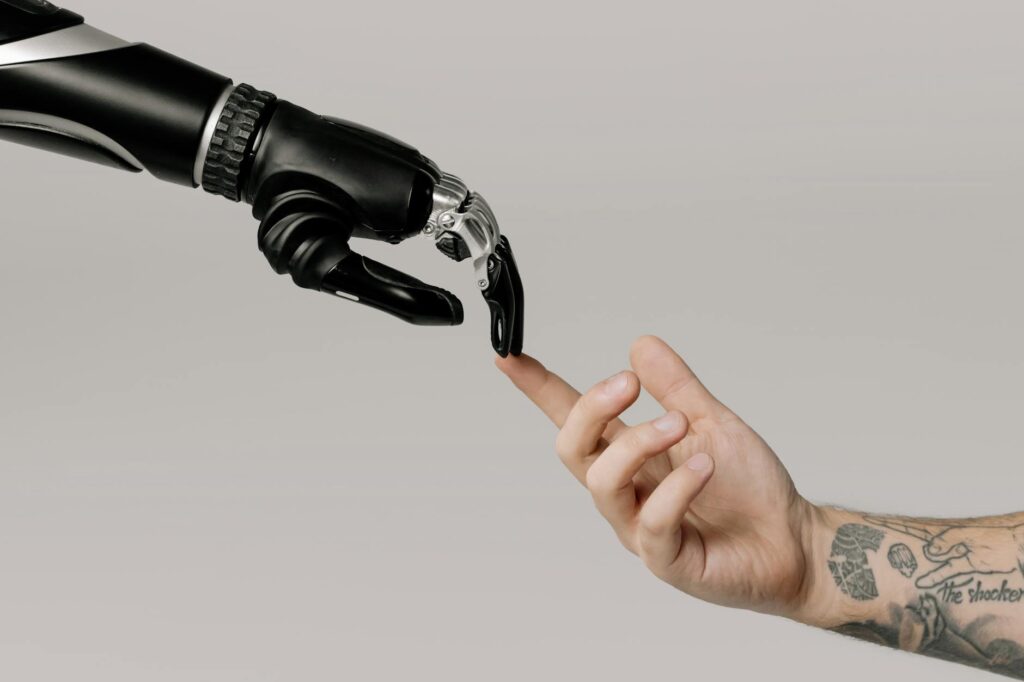The Roots of Rebellion: How Open Source Philosophy Built the Foundation for AI’s Evolution
The Open Source Revolution: How Collaboration is Shaping the Future of AI and Global Power Dynamics
This is Part 1 of a 4-part series where we explore how the ethos of open-source software—transparency, community, and democratization—has become the backbone of AI innovation, reshaping industries, corporate strategies, and the geopolitical rivalry between the U.S. and China.

From a personal passion project to ChatGPT: The unlikely marriage of countercultural ideals and cutting-edge AI.
In 1991, a 21-year-old Finnish student named Linus Torvalds released the Linux kernel, a free alternative to proprietary operating systems. Three decades later, open-source principles power everything from smartphones to AI models like ChatGPT. This is the story of how a grassroots movement—built on collaboration, transparency, and defiance of corporate control—became the backbone of modern technology.
How do we Monetize Open-Source? Check out Part 2 in our 4-Part series on Open-Source Economy.
Why It Matters
Open-source software now underpins 96% of enterprise IT systems and drives AI innovation. Yet its rise was neither inevitable nor peaceful. From ideological battles over “free software” to corporate co-opting of community projects, the movement’s history reveals a tension between idealism and pragmatism—a tension now shaping the future of AI.
History & Milestones
- 1950s–1980s: The Dawn of Shared Code
- 1950s: Early computing culture thrived on collaboration. Institutions like MIT shared code freely (e.g., CTSS, one of the first time-sharing operating systems, although not Open-Source, it promoted a culture of sharing and collaboration among its users).
- 1970s: Commercialization began locking software behind licenses. IBM’s proprietary systems dominated.
- 1985: Richard Stallman launched the Free Software Foundation (FSF), advocating for the “four freedoms” (use, study, modify, share) via the GNU Project and GPL license.
Flashback: “Free as in speech, not free as in beer”—Stallman’s “mantra” emphasized liberty over cost.
Software like Linux is considered “free as in speech” because users have the freedom to use, copy, modify, and redistribute it. On the other hand, freeware is often “free as in beer” because it is provided without charge but may not grant the same freedoms to the user to modify or redistribute it. (see source)
1990’s: Linux and the Open-Source Revolution
- 1991: Torvalds released Linux, combining GNU tools to create the first fully open-source OS.
- 1998: The term “open source” was coined to rebrand free software, distancing it from ideological baggage. Netscape’s release of Mozilla browser code marked corporate adoption.
Between the Lines: Open source succeeded by appealing to businesses—not just activists.
2000’s-2010’s: Mainstream Adoption
- 2005: Git (created for Linux development) revolutionized version control.
- 2008: GitHub democratized collaboration, now hosting 100M+ developers.
- 2015: Google open-sourced TensorFlow, accelerating AI research.
Key Milestone: By 2025, 96% of organizations will use open-source tools, driven by cost savings (53%) and innovation.
Cultural Pillars: The DNA of Open Source
- Collaboration Over Ownership: Projects like Linux thrive on global contributor networks.
- Do-ocracy: Influence is earned through action, not titles.
- Transparency: Code and decisions are public—a stark contrast to proprietary “black boxes.”
- Meritocracy: Expertise, not seniority, dictates authority.
Yes, But: Critics argue corporate giants like Microsoft (GitHub) and Google (TensorFlow), both open source, now hold outsized influence. Their dominance raises questions about the potential concentration of power within these two companies and its implications for competition and innovation.
AI Adoption: Lowering Barriers, Raising Stakes
Open-source culture democratized AI development:
- 2017: Hugging Face released its Transformers library, enabling startups to build NLP models without costly infrastructure.
- 2023: Meta’s Llama 2 leak sparked debate—was it a gift to developers or a security risk?
Case Study: TensorFlow and PyTorch dominate AI research because they’re free, flexible, and community-driven.
Modern Challenges: Idealism vs. Pragmatism
- Security Risks: 41% of organizations using outdated open-source tools fail compliance audits.
- Ethical Dilution: Corporate licenses (e.g., Elasticsearch’s 2021 shift) prioritize profit over community access.
- Monetization Tensions: Red Hat’s $3.4B revenue model (support services) thrives, but purists argue it betrays open-source ideals.
What’s Next: The Open-Source Paradox—Community Ideals Built a $30B Industry
The open-source movement’s greatest achievement lies in its paradoxical fusion of communal innovation and capitalist pragmatism. By transforming software from walled-garden products into a global public good, it democratized access to technology while spawning a $30B+ industry. Yet its future hinges on resolving a core tension: Can profit-driven giants like Microsoft and Google coexist with the anti-monopoly ethos that birthed Linux? As AI becomes the next battleground, this question grows urgent—and the stakes are nothing less than who controls the infrastructure of the modern world.
What’s Next in Part 2: How do companies like Red Hat and Hugging Face turn “free” code into billion-dollar empires? From enterprise support to AI inference APIs, we dissect the art of monetizing collaboration—and ask whether the open-source dream can survive its own success.
Fast Facts
- Enterprise Adoption: By 2025, 96% of organizations use open-source tools, driven by cost savings (53%) and innovation.
- Developer Shift: Transition from proprietary IDEs to open tools like VS Code.
- Hybrid Models: Companies like Red Hat blend open-source code with premium support/services.
- $3.4B: Red Hat’s annual revenue from hybrid cloud solutions.
- 41%: Companies with compliance risks due to outdated open-source software






